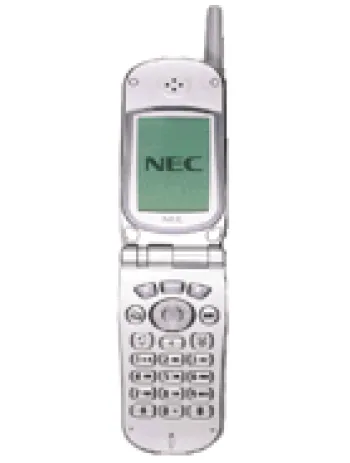
Introduction to NEC DB6000
The NEC DB6000 is a classic mobile device that was launched in 2001, representing a specific era in the history of mobile phones. Though it lacks many of the features of modern smartphones, it served its purpose as a reliable communication tool. In this article, we will explore the specifications, features, and overall functionality of the NEC DB6000 in detail.
Network Capabilities
The NEC DB6000 operates on GSM technology, specifically supporting the GSM 900 and GSM 1800 bands. This made it compatible with many networks across various regions during its release period. However, the lack of GPRS and EDGE means it does not support packet-switched data, and therefore, browsing and data-related capabilities were extremely limited. This device was primarily designed for voice and simple text communication.
Launch and Availability
First announced in 2001, the NEC DB6000 was eventually discontinued, as technological advancements quickly moved towards more advanced features and functionalities. Despite its eventual discontinuation, the phone had a period where it fulfilled the needs of users looking for basic mobile communication.
Design and Build Quality
The NEC DB6000 comes with dimensions of 94 x 50 x 26 mm, fitting comfortably in hand or pocket and reflecting the design language of early 2000s mobile phones. It uses a Mini-SIM, a standard of its time. While the weight is unspecified, the device was lightweight for easy portability. Its durability was typical for the era, designed to withstand everyday use without the fragility of modern glass smartphones.
Display Specifications
The NEC DB6000 features a monochrome graphic display with a resolution of 120 x 160 pixels. The lack of color was common in phones from this time, and while it may seem limiting, for basic functionalities like reading texts and navigating the menu, it sufficed the users' requirements.
Memory and Storage
In terms of memory, the NEC DB6000 was quite minimal. It did not support any memory card slots, meaning users were limited to built-in storage. The phonebook capacity allowed for 100 entries, and call logs could store up to 10 dialed, 10 received, and 10 missed calls. This limited storage capacity underlined the primary function of the phone: to serve as a communication device rather than a multifunctional gadget.
Audio Features
The sound capabilities of the NEC DB6000 were basic, with no built-in loudspeaker. It supported vibration and monophonic ringtones, and users even had the option to compose simple tunes. The absence of a 3.5mm headphone jack was typical for the era, reflecting the phone's limited scope regarding multimedia features.
Communication Features
The NEC DB6000 lacked advanced communication features. There was no support for WLAN, Bluetooth, positioning, or radio, which are commonly found in later mobile devices. This further emphasizes that its focus was on voice calls and SMS. While these features seem highly limited today, they were adequate for the minimal connectivity requirements during the phone's time.
Software Features
Running as a feature phone, the NEC DB6000 supported SMS for messaging and WAP-enabled browsing, albeit at slow and limited functionality. It included essential tools such as clock and alarm but no games or Java capabilities. The device supported 18 languages, allowing it to accommodate a diverse range of users globally.
Battery Life
The device comes equipped with a removable Li-Ion battery with a capacity of 600mAh. Although this may sound minimal, the lack of power-intensive features allowed the device a respectable standby time of 195 hours and talk time up to 5 hours. This was significantly more efficient compared to smartphones that require frequent charging.
Conclusion
The NEC DB6000 was a hallmark piece of technology during its time, offering simplicity and reliability for basic communication needs. While it lacked the modern features seen in current smartphones, it satisfied the primary essentials: voice and basic text communication. Its compact design and energy efficiency were key highlights, reflecting the technological achievements of its era. For history enthusiasts and those interested in the evolution of mobile technology, the NEC DB6000 serves as an interesting study of early 2000s mobile phone design and utility.
Key Features of the NEC DB6000
- GSM Technology supporting GSM 900 / 1800 bands
- Compact dimensions: 94 x 50 x 26 mm
- Lightweight with Mini-SIM compatibility
- Monochrome graphic display with 120 x 160 pixel resolution
- Phonebook capacity of 100 entries
- Tracks up to 10 dialed, 10 received, and 10 missed calls
- Vibration and Monophonic ringtones with composer
- Basic messaging with SMS support
- WAP browser for internet access
- Alarm and clock features
- Supports 18 languages
- Removable Li-Ion battery with up to 195 hours stand-by time and 5 hours talk time
- Silver color option
NEC DB6000 Key Disadvantages
- Lack of GPRS and EDGE support, limiting internet capabilities.
- Discontinued model, making it difficult to find support and spare parts.
- Monochrome graphic display, which offers limited visual clarity and quality.
- No memory card slot, restricting storage capacity to a limited phonebook.
- Absence of a camera, which is a standard feature in many contemporary phones.
- No loudspeaker and 3.5mm jack, limiting audio output options.
- Missing wireless connectivity options like WLAN and Bluetooth.
- No GPS functionality, affecting navigation capabilities.
- Limited multimedia features with no games and lack of Java support.
View Also
More Phones
All Rights Reserved +14266 Phones © Mobilawy 2025

























